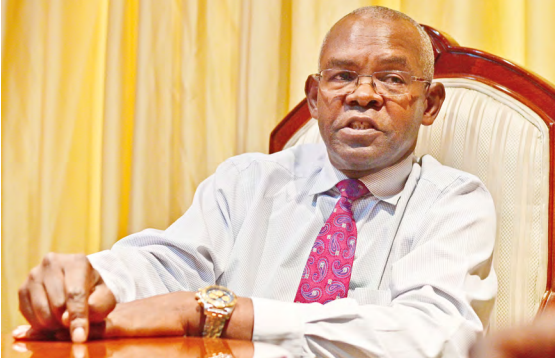

Central Bank of Kenya has written to 13 banks to explain how they plan to progressively increase their core capital to Sh3 billion this year and Sh10 billion by 2032.
The regulator revealed this at a virtual post-Monetary Policy Committee (MPC) media briefing on Thursday.
The apex bank did not however disclose the banks.
“We have written to 13 commercial banks with core capital less than Sh3 billion to not only explain how they are going to meet the requirement this year but a detailed report on how they will realise a minimum capital of Sh10 billion in the long run,” CBK governor Kamau Thugge said.
Late last year, President William Ruto signed into law the Business Laws (Amendment) Bill that changed various laws including the Banking Act, Cap 488; Central Bank of Kenya Act, Cap 491 and Microfinance Act, Cap 493C seeking to strengthen the country’s banking sector.
Commercial banks have been observing a minimum core capital of Sh1billion since 2012 after an effort to raise the amount to Sh5 billion flopped in 2015.
According to the latest banking supervision report, 11 banks including Bank of Africa, Premier Bank, Habib Bank, M-Oriental Bank Kenya, Credit Bank, Paramount Bank, Development Bank, HFC, UBA, Middle East Bank and Access Bank did not meet the Sh3 billion threshold needed by end of this financial year.
Consolidated Bank and Spire Bank now sold to Equity Bank Holdings violated the current requirement of Sh1 billion.
Uganda recently increased its requirement to Sh5.1 billion, forcing downgrades for several banks, including Kenya’s ABC Capital Bank.
Meanwhile, banks marginally cut non-performing loans to 16.4 per cent from 16.5 and 16.7 per cent in November and September 2024 respectively illustrating borrowers’ effort to honour loan obligations as the cost of living ease on stable currency and easing credit rates.
This is a marked improvement from a year ago when gross non-performing loans almost hit 18 per cent as the shilling massively dropped against major international currencies and inflation threatened to clock double digits.
Kenya’s overall inflation stood at 3.3 per cent in January 2025 compared to three per cent in December 2024 and remained below the midpoint of the target range of 5±2.5 per cent.
Core inflation declined to 2.0 percent in January from 2.2 percent in December, reflecting muted demand pressures in the economy.
The decline in core inflation was mainly on account of lower prices of processed food items, particularly sugar, maize and wheat products.
The lower NPL ratio is also attributed to easing lending rates with the apex bank on Wednesday further cutting the base rate by 50 basis points to 10.75 per cent.
According to CBK, the drop in CBR is expected to lower the average commercial lending rate in the coming months from the current 16.9 per cent, having dropped from 17.2 per cent in December last year.
The apex bank also reduced the
Cash Reserve Ratio (CRR) by 100
basis points to 3.25 per cent from
4.25 per cent, to complement the
lowering of the CBR, and support
the lowering of lending rates to aid
cash flow to the private sector.











